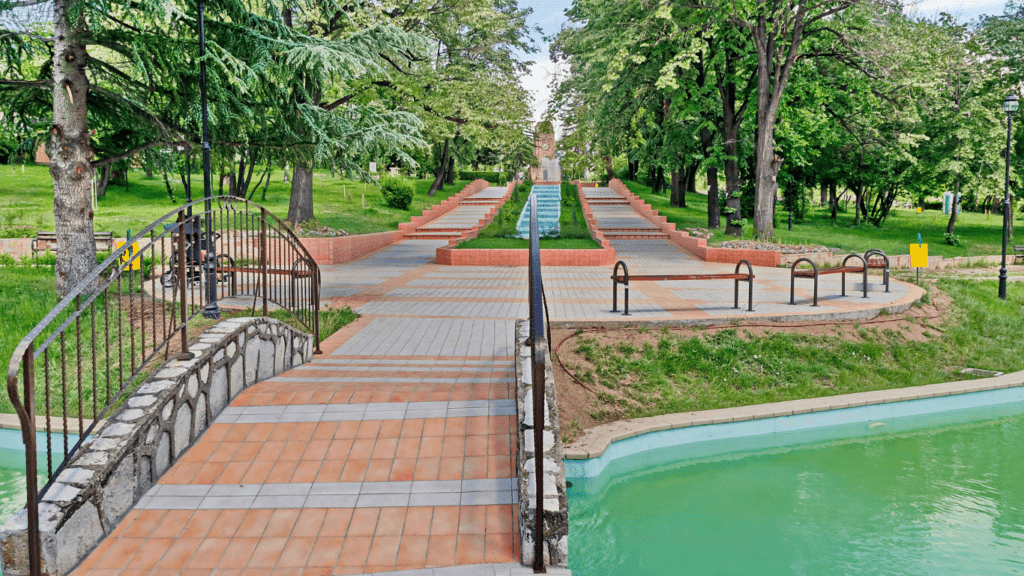Photography’s all about storytelling, and leading lines are one of the most powerful tools to guide your viewer’s eye. They’re like visual arrows, naturally pulling focus toward your subject and creating a sense of depth and direction. Whether it’s a winding road, a row of trees, or even shadows, these lines can transform a simple shot into something captivating.
What Are Leading Lines?
Leading lines are visual elements in a scene that direct a viewer’s gaze toward a specific area or subject in a photograph. These lines often follow natural or man-made paths, such as roads, fences, rivers, or architectural details. By guiding the eye, they establish a connection between the foreground and the subject.
Every leading line serves the purpose of creating visual flow. In horizontal compositions, they promote balance and stability, while diagonal lines add a sense of movement. Vertical lines emphasize height, often creating an impression of grandeur or strength.
Photographers rely on leading lines to structure their compositions. For example, converging lines in a street scene can draw focus toward a person walking, while curved lines like winding trails can evoke feelings of exploration. Leading lines work best when they’re strategically aligned with the subject to enhance its prominence.
Importance Of Leading Lines In Photography
Leading lines play a key role in photography by guiding the viewer’s eye and creating intentional focus within an image. They enhance storytelling and add structure to a composition, making the subject more prominent and visually engaging.
Drawing Attention To The Subject
Leading lines direct the viewer’s gaze toward the subject of the photograph, ensuring its prominence in the frame. Elements like:
- roads
- pathways
- fences
naturally lead the eye along their trajectory, culminating at the focal point. By using lines that start from the edge of the frame and converge on the subject, I create a seamless visual journey that draws attention where it’s intended. Straight lines add clarity to the focus, while curved lines offer a more dynamic flow, subtly guiding the gaze.
Enhancing Composition And Depth
- Leading lines strengthen composition by organizing visual elements and adding depth to flat frames.
- Horizontal lines maintain a stable, balanced structure; dynamic diagonal lines add tension and movement, while vertical lines convey strength and height.
- In landscapes, trails or riverbanks lead the viewer into the scene, creating a three-dimensional effect.
- By incorporating converging lines, I amplify depth perception, making the overall photograph visually immersive.
Types Of Leading Lines

Leading lines can be natural, artificial, or implied, each offering unique opportunities to enhance composition and storytelling in photography. Understanding these types helps me choose the most effective way to direct attention to my subject.
Natural Leading Lines
Natural elements in the environment often create leading lines that seamlessly guide the viewer’s eye. Features like rivers, tree branches, mountain ridges, or pathways form organic visuals that bring depth and context to the image. For example, I use shorelines to guide focus toward subjects in landscape photography or tree trunks to frame portraits.
Artificial Leading Lines
Man-made structures introduce deliberate, bold lines that make compositions more striking. Roads, fences, bridges, rail tracks, and buildings create these lines, offering dynamic opportunities for urban, architectural, or industrial photography. I often use converging lines, like those from train tracks or tunnels, to emphasize symmetry or focus on subjects at a vanishing point.
Implied Leading Lines
Implied lines rely on visual cues rather than physical connections to draw attention, creating a more subtle guide for the viewer. For instance, I position a subject’s gaze or movement to lead towards the main area of focus. Shadows, light contrasts, or even repeated shapes also serve as effective implied lines that contribute to visual storytelling.
How To Use Leading Lines Effectively
Using leading lines effectively enhances composition and ensures the subject gains prominence. It requires thoughtful choices in line selection, subject placement, and framing techniques.
Choosing The Right Lines
I identify lines that naturally guide the viewer to the subject without distractions. Strong leading lines, like roads or fences, provide defined visual pathways. Organic lines, such as rivers or tree branches, create subtle connections, while implied lines, like a person’s gaze, add an indirect yet powerful visual flow. I select lines based on the mood and intent of the photograph, ensuring they complement the subject and theme.
Positioning The Subject
I place the subject strategically where leading lines converge or point, as this adds emphasis. For example, positioning a person where two walls meet directs attention immediately to them. I avoid clutter around the subject and ensure the lines guide the viewer’s eye smoothly to it. The placement, whether in the foreground or deeper within the frame, depends on the storytelling intent.
Using Perspective And Framing
I use perspective and framing to strengthen the effect of leading lines. Low angles make lines appear more dominant, adding depth and grandeur, while compositional framing (e.g., through windows or archways) accentuates the subject. Vanishing points, created by elements such as train tracks, enhance depth while naturally leading the viewer to the subject. I continuously adjust my angle and framing to amplify the visual impact of the lines in my composition.




